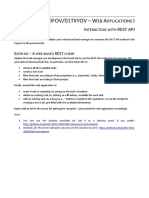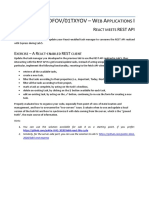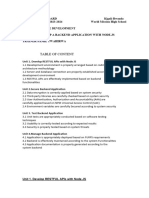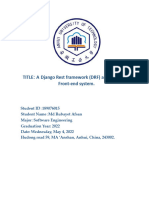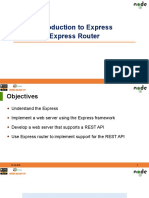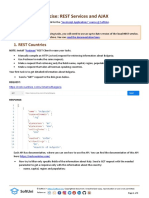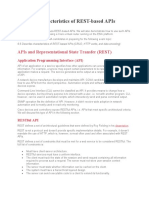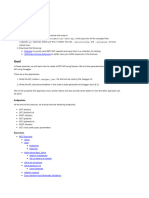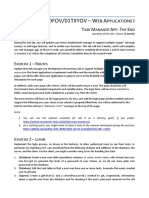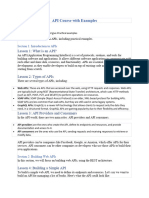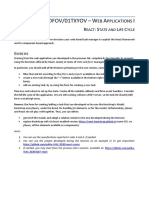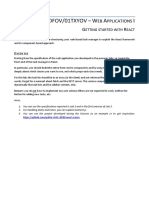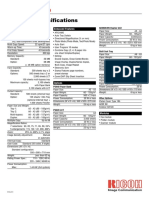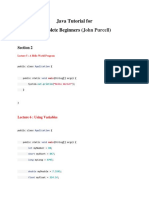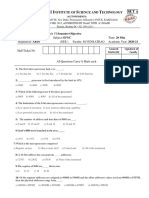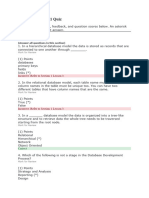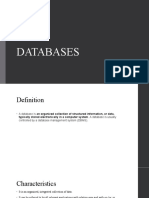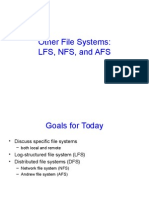0% found this document useful (0 votes)
87 views2 pagesL05 Express PDF
The document outlines an exercise to design and implement a REST API for a task manager application using Express. It describes the properties of a task and defines the core CRUD operations that the API should support, including retrieving all tasks, creating a new task, getting a single task, updating a task, and deleting a task. It also suggests additional API endpoints for marking a task as completed and filtering tasks based on their properties. Students are instructed to design the API endpoints following REST principles and then implement and test the API using Express, SQLite, and testing tools like Postman.
Uploaded by
paci93Copyright
© © All Rights Reserved
We take content rights seriously. If you suspect this is your content, claim it here.
Available Formats
Download as PDF, TXT or read online on Scribd
0% found this document useful (0 votes)
87 views2 pagesL05 Express PDF
The document outlines an exercise to design and implement a REST API for a task manager application using Express. It describes the properties of a task and defines the core CRUD operations that the API should support, including retrieving all tasks, creating a new task, getting a single task, updating a task, and deleting a task. It also suggests additional API endpoints for marking a task as completed and filtering tasks based on their properties. Students are instructed to design the API endpoints following REST principles and then implement and test the API using Express, SQLite, and testing tools like Postman.
Uploaded by
paci93Copyright
© © All Rights Reserved
We take content rights seriously. If you suspect this is your content, claim it here.
Available Formats
Download as PDF, TXT or read online on Scribd
/ 2
